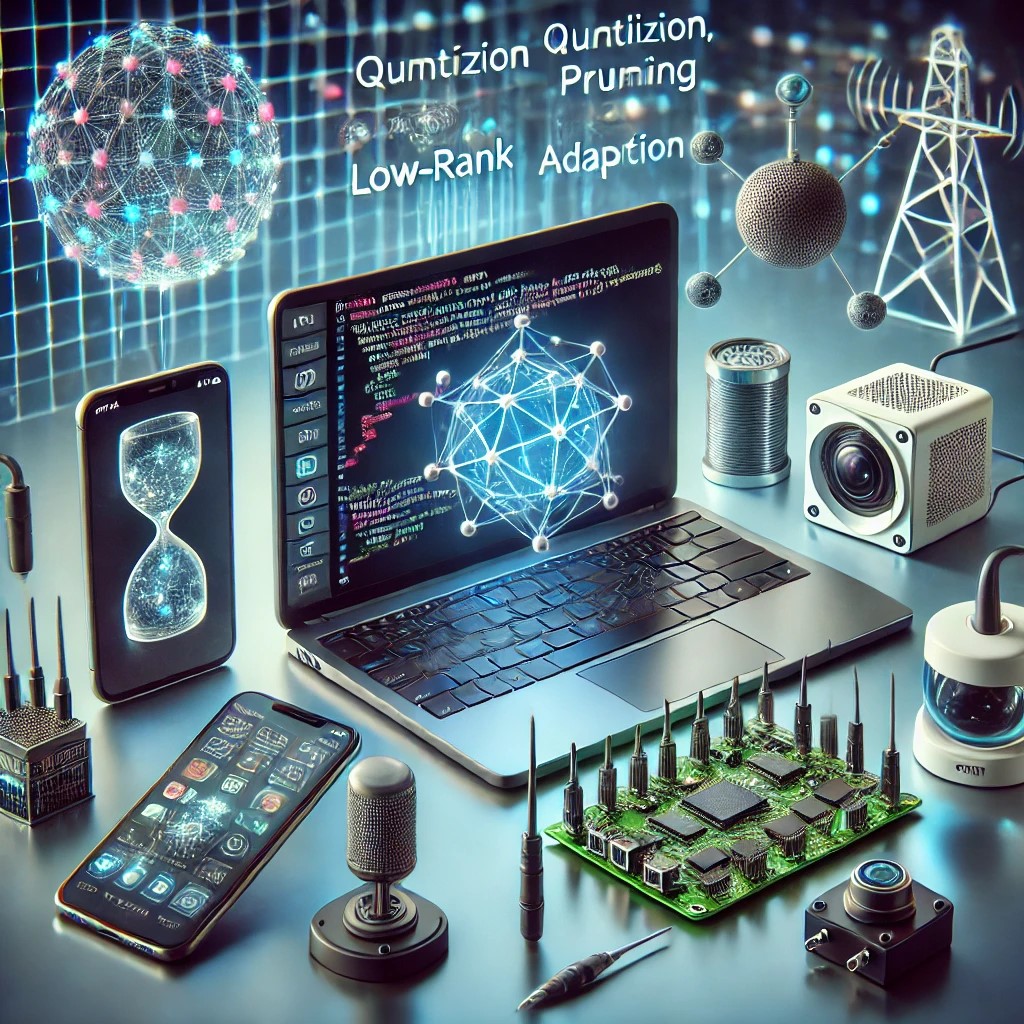Small AI Models for Edge Computing Using PyTorch-Edge computing, which refers to processing data closer to the data source (like IoT devices), demands efficient models that can operate with limited resources. This is where smaller AI models come into play, and PyTorch, a popular open-source machine learning library, is at the forefront of this transformation.
The Need for Smaller AI Models
Large AI models are powerful but often require substantial computational resources, including high-end GPUs and significant memory. These models are not always practical for deployment in edge devices, which are typically limited in processing power and energy. Smaller AI models, optimized for efficiency, are becoming increasingly important for edge computing applications.
Key Benefits of Smaller AI Models:
- Reduced Latency: Processing data on the device rather than sending it to the cloud reduces latency, allowing for real-time decision-making.
- Improved Privacy: Data is processed locally, reducing the risk of data breaches and ensuring privacy.
- Lower Costs: Smaller models require less computational power, which can reduce energy consumption and hardware costs.
How PyTorch Facilitates Model Optimization
PyTorch has become a preferred framework for developing and optimizing AI models due to its flexibility, ease of use, and robust community support. When it comes to optimizing small AI models for edge computing, PyTorch offers several techniques and tools:
- Quantization: PyTorch provides built-in support for model quantization, a process that reduces the precision of the numbers used in the model’s calculations, thus decreasing the model size and increasing inference speed without significantly impacting accuracy.
- Pruning: This technique involves removing less important connections in the neural network, leading to a smaller and faster model. PyTorch offers tools to implement pruning during or after training.
- Knowledge Distillation: This process involves training a smaller model (student) to replicate the behavior of a larger model (teacher). PyTorch allows for efficient implementation of this technique, which is particularly useful when deploying models on edge devices.
- Low-Rank Adaptation (LoRA): LoRA in PyTorch involves freezing the pre-trained model weights and injecting trainable layers that adjust the model with fewer parameters. This method significantly reduces the memory required and speeds up training, making it ideal for edge computing.
Practical Applications of Small AI Models in Edge Computing
Small AI models are being utilized in various edge computing scenarios, including:
- Smartphones: AI models running on smartphones can perform tasks like image recognition and natural language processing without relying on cloud services.
- IoT Devices: From smart home devices to industrial sensors, small AI models enable real-time data analysis and decision-making at the edge.
- Autonomous Vehicles: AI models deployed in vehicles must be small enough to process data in real-time, ensuring safety and reliability.
FAQs
Q1: What is edge computing, and why is it important?
A1: Edge computing refers to processing data closer to the source of data generation rather than relying on a centralized cloud server. It is important because it reduces latency, enhances privacy, and decreases bandwidth usage, making it ideal for real-time applications.
Q2: How does quantization help in optimizing AI models for edge computing?
A2: Quantization reduces the precision of the numbers used in a model’s computations, resulting in a smaller model size and faster inference times. This is particularly useful for deploying models on devices with limited computational resources.
Q3: Can PyTorch be used for optimizing models for edge devices?
A3: Yes, PyTorch is highly effective for optimizing models for edge computing. It offers several tools and techniques, such as quantization, pruning, and knowledge distillation, to help developers create efficient models suitable for edge deployment.
Q4: What are some real-world examples of edge computing using small AI models?
A4: Real-world examples include AI-powered smartphones, smart home devices, industrial IoT sensors, and autonomous vehicles. These applications benefit from reduced latency, improved privacy, and lower operational costs by utilizing small AI models.
Q5: What is the role of Low-Rank Adaptation (LoRA) in model optimization?
A5: LoRA is a technique used to reduce the number of trainable parameters in a model by injecting low-rank matrices. This reduces the memory footprint and speeds up the training process, making it suitable for edge computing where resources are limited.
Conclusion
Optimizing small AI models for edge computing is crucial as we continue to push the boundaries of AI applications. PyTorch, with its rich set of tools and flexibility, provides a powerful platform for developing these models. By leveraging techniques like quantization, pruning, and LoRA, developers can create efficient AI models that meet the demands of edge computing environments.

